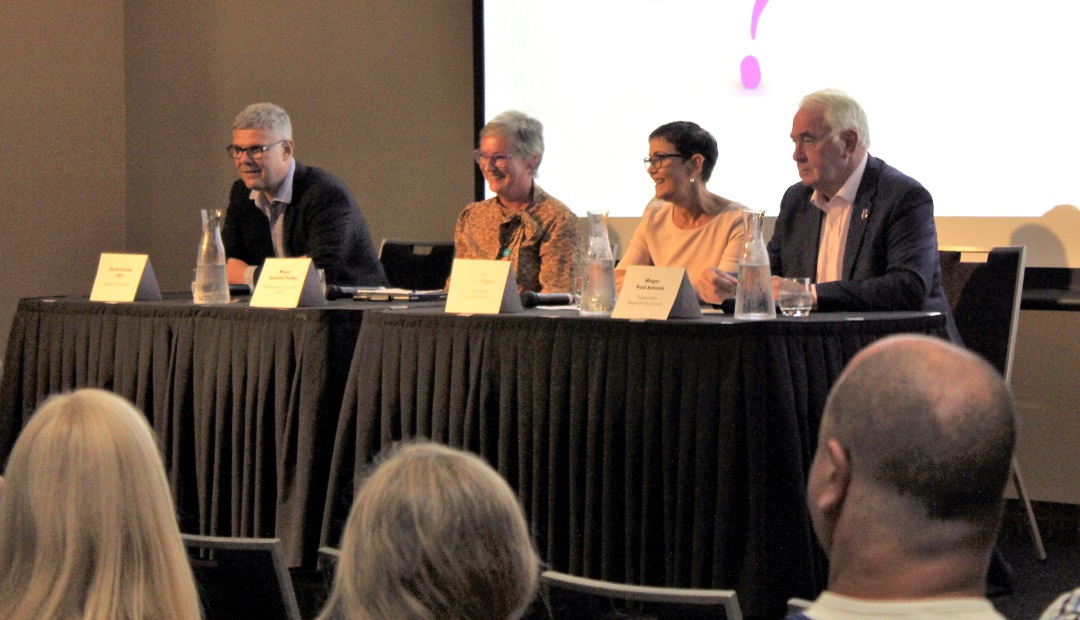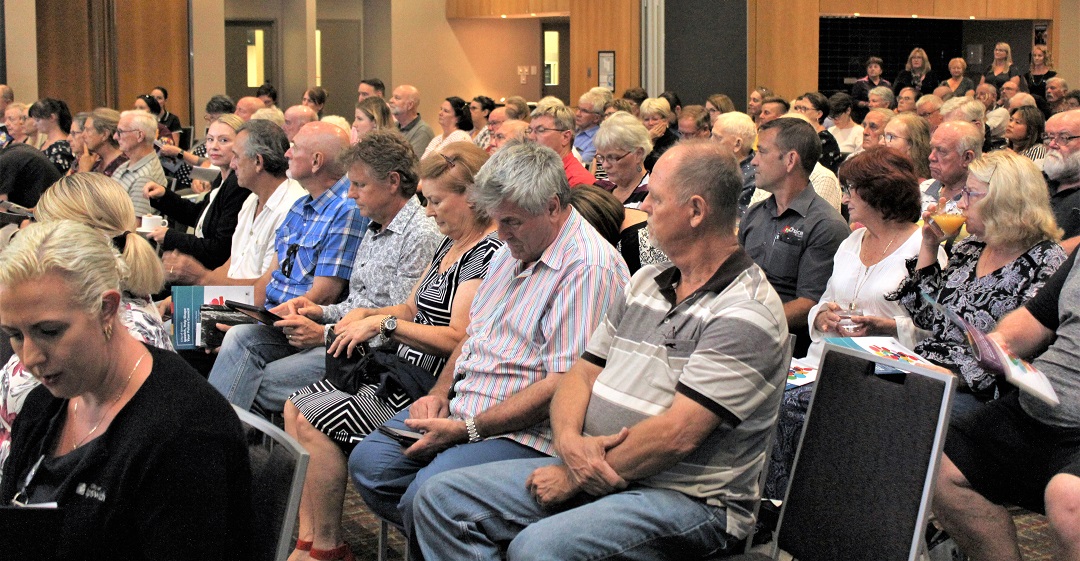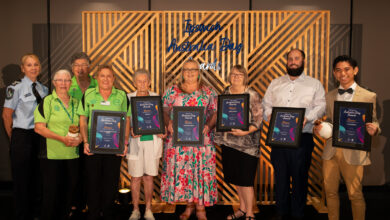Divided or undivided? Single or multi councillor divisions?
The dilemma remains after a community consultation session hosted by Ipswich City Council last night to discuss three options relating to divisional boundaries ahead of the 2020 March local government elections.
About 160 people – including five of the 10 councillors sacked last year, two state MPs, former and future candidates, plus interested residents – packed the North Ipswich Reserve Corporate Centre for the near two-hour forum chaired by Interim Administrator Greg Chemello.
Four expert speakers brought a wealth of experience to the table, not only from local government, but from working within the various models across their own councils.
The speakers were Toowoomba Regional Council Mayor Paul Antonio, Lockyer Valley Regional Council Mayor Tanya Milligan, Shoalhaven City Council (NSW) Mayor Amanda Findley and new Ipswich City Council CEO David Farmer.
Ipswich residents will be able to vote for councillors again at elections in exactly one year. There are three broad models of electing councillors as community representatives up for consideration (each model will result in a minimum of eight and maximum of 12 councillors being elected):
- Undivided – (no divisions)
- Divided – 1 councillor per division (8 to 12 divisions)
- Divided – 2 or 3 councillors per division (4 to 6 divisions)
Mr Chemello started proceedings by reassuring the audience that he and council had not made up their mind over the preferred model to be recommended to the Local Government Minister after the consultation period ended this month and he was almost certain the State Government was still undecided.
He confirmed more than 650 public submissions had so far been received from Ipswich residents.
“There are three strong options that are getting some serious attention from the community … the state ultimately will make the decision, however they will seek our advice,” he said.

The panel: Ipswich City Council CEO David Farmer, Shoalhaven Mayor Amanda Findley, Lockyer Valley Mayor Tanya Milligan and Toowoomba Mayor Paul Antonio.
Undivided model works ‘well’ for Toowoomba
Cr Antonio said the undivided model – with the first 10 candidates past the post elected – worked well for Toowoomba. Only 31 candidates stood for those spots at the last election.
“One vote, one value, with equal weighting. The 10 councillors are equally responsible to every ratepayer,” he said.
Cr Antonio said the system was not perfect as some residents and smaller communities felt disenfranchised.
He said name recognition of candidates was very important with the undivided model and, answering a question from the event’s MC, well known journalist Madonna King, he agreed it was possible 10 people from the same street in the same suburb could get elected.
Cr Milligan said she had experience with divided and undivided councils, with the latter working well for Lockyer, which had six councillors. She said in a divided council with single representation, councillors could lose sight of the “bigger picture” and get bogged down with local issues rather than working for the good of the entire region.
During the public Q&A, she recommended option 3 for Ipswich, a divided council with 2 or 3 councillors in each division. She also said she was against quotas (ensuring more female councillors) and thought it was best to “give the job to the right person”.
Cr Findley presented the unique-to-NSW/VIC model of multi-representative, with 12 councillors – four councillors representing each of the three wards – and her as an “unpopular” mayor, where they were all part-time. She received a stipend of $45,000 a year as mayor, with the councillors getting a $20,000 annual stipend.
She said it was the best system for a coastal city which stretched 130kms from north to south.
“I love our system because it gives the best value representation to those people who live in the far-flung corners of our electorate,” she said.
Cr Findley, who campaigned on the Greens ticket with three colleagues, said the system allowed for party politics and largely prevented individual, independent candidates from getting elected.
She also said it was essential to get younger people, in particular women, interested in local government.
Each model has strengths and weaknesses
Mr Farmer, who had worked across all three models during his stints at Mudgee Shire Council, Cairns City Council and Wollongong City Council, said there were advantages and disadvantages to each model.
“It comes down to people, getting quality representatives will make whatever system work,” he said.
Answering a question from the floor about future councillors being put through “business school”, Mr Farmer agreed there were major complexities for newcomers getting across the business of council. He said at Wollongong, councillors were encouraged to do the Institute of Public Directors course and there would be similar aspirations for new councillors in Ipswich.
“We would be seeking to assist each councillor to skill themselves up as much as possible,” he said.
Wrapping the evening up, Mr Chemello discussed some of the local government reforms being considered by the State Government, including financial caps on campaigning, and likened councillors on council to a company Board of Directors.
He said Ipswich was now a big city, with a big budget and a big vision for the future.
Also read:


